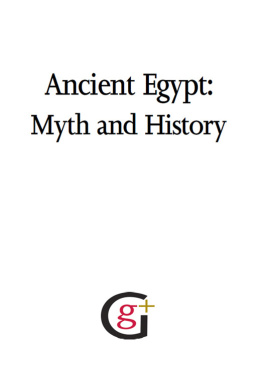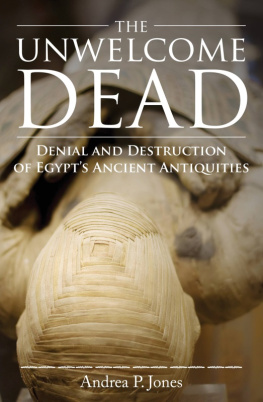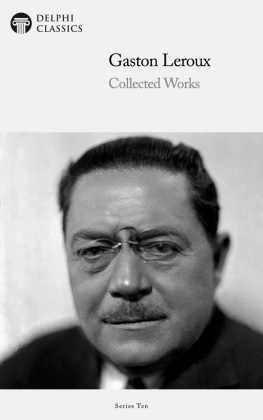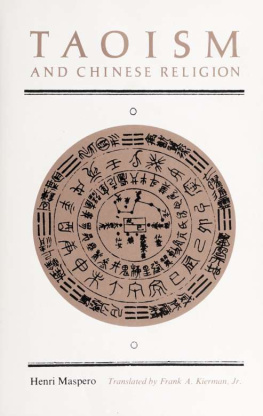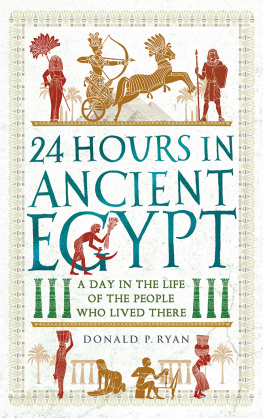Egypt
Ancient Sites and Modern Scenes
GASTON MASPERO
Egypt, G. Maspero
Jazzybee Verlag Jrgen Beck
86450 Altenmnster, Loschberg 9
Deutschland
ISBN: 9783849650193
www.jazzybee-verlag.de
admin@jazzybee-verlag.de
Availability: Publicly available via the Travelers in the Middle East Archive (TIMEA) through the following Creative Commons attribution license: "You are free: to copy, distribute, display, and perform the work; to make derivative works; to make commercial use of the work. Under the following conditions: By Attribution. You must give the original author credit. For any reuse or distribution, you must make clear to others the license terms of this work. Any of these conditions can be waived if you get permission from the copyright holder. Your fair use and other rights are in no way affected by the above." (Status: unknown)
Translator: Elizabeth Lee (1857 1920)
CONTENTS:
CONTENTS: iii
PREFATORY NOTE
A PART of my duties as Director of the Service des Antiquits in Egypt consists in an annual inspection of the monuments. From 1881 to 1886, the period of my first sojourn in Egypt, a steamboat, the Menchieh, was put at my disposal. She was better known to the riverside population by the name of Nimro Hadachere, No. 11. She was a flat-bottomed brigantine, provided with an engine of a type archaic enough to deserve a place in the Museum of Arts and Crafts. From 1840 to 1860 she had regularly performed the journey to and fro between Alexandria and Cairo once a month. She was then invalided on account of old age, but was again put into working order for the visit of Prince Napoleon to Egypt in 1863. In 1875 she was presented to Mariette, and after a long period of inaction, descended to me, and I made my journeys in her for five years. My successors, however, did not preserve her, and on my return I found a princely old dahabieh, the Miriam, which I have used ever since.
At the beginning of my campaign, about the middle of December, I tow her, without making a halt, to the limit of my course, to Assoun or Ouadi-Halfah. Thence I abandon myself to the stream, the wind sometimes assisting my progress, but more often preventing it, so that day after day we are obliged to have recourse to the oars in order to advance a mile or two. Such a method of navigation, although no longer to the taste of the tourist, offers great advantages to the Director of the Antiquits. It gives him an opportunity of visiting less important sites where no one stops unless compelled, sites that he would not himself have thought of visiting had not the impossibility of proceeding against the wind forced him to drop anchor in their neighbourhood. To these unpremeditated delays I owe not only several monuments which make no bad figure in the Museum, but also impressions of modern Egypt that help me to a better understanding of ancient Egypt. I noted down these impressions from day to day without any object beyond that of giving adequate expression to what I felt or observed, and from 1900 printed in Le Temps every year those of them that seemed likely to interest Egyptologists, and at the same time to make appeal to the general public.
M. Guilmoto, the publisher of New Light on Ancient Egypt, suggested that I should collect these articles and issue them in volume form. The idea found favour with me, and I consented. I obtained M. Hbrard's permission to use the articles that had appeared in Le Temps, and I added to them some that had been printed in La grande Revue and in La Revue d'Orient.
May I express the hope that readers who know Egypt will recognise it in this book, and those who do not yet know it, may be inspired by these pages to make its acquaintance?
G. MASPERO.
BIBEH.
NOTE ON THE SPELLING OF THE EGYPTIAN NAMES (Written specially for the English edition)
THE transcriptions of the Egyptian names in this volume differ so materially from those in general use in England that a word of explanation in regard to them seems advisable. For such barbarous pronunciations as Thoutmes, Ahmes, Rusorm, I have substituted Thoutmsis, Ahmsis, Ousimars, a vocalisation nearer that of the ancient pronunciation. Some of the vowel sounds, like those of the three names just quoted, are derived from the Greeks, or from the Egyptians of the Grco-Roman period; others are deduced by analogy with Greek transcriptions from forms the exact transliteration of which has not been preserved for us by the ancients. The reader will easily recognise the former in those where I have kept the Greek or Latin terminations cs, os, or us, is, ous; where those terminations are wanting, the form is deduced by analogy, or determined in accordance with the rules of grammar. Thus Amenthes (Amenhotep), Khmois (Kha-em-uas), Harmakhis (Hor-em-Khou) are pronunciations justified by the Greek renderings; Amenemhat (Amenemhat), Hatshopsoutou (Hatasou, Hashepsou) are grammatical deductions. Many points are still doubtful and some of the vowel sounds will have to be modified in the future; but they have at least the merit of testifying to an effort towards the truth, and of undeceiving the public who, on the faith of the Egyptologists, accept as legitimate, pronunciations which would have been considered monstrous by the Egyptians themselves.
An error is easily corrected when it first arises, but if it is allowed to persist it is an exceedingly difficult matter to eradicate it. No better proof can be given than the persistence of the form Hatasou for the name of the great queen who shared the throne of the Pharaohs with Thoutmsis III. For the sake of uniformity, I have adopted the orthography and vocalisation of the Grco-Roman period, in the same way as in France we use the French forms, Clovis, Clotaire, Thierry, for the Merovingian kings in order not to introduce very dissimilar words into our history books. We must, however, remember that the vocalisation and pronunciation of names do not remain unchanged during the course of history. Not to mention dialect forms which would be too difficult to determine, I established a long while ago, partly by means of the Assyrian transcriptions, that many names of which the tonic syllable is vocalised in , u, in the Greek period, have the same syllable vocalised in under the second Theban empire, in the vernacular of the age of the Ramses: the Amenthes, i.e., the Amenhotep of Manethon, is Amanhatep in the inscriptions of El-Amarna. The recent discovery of Hittite archives confirms that fact, for they give among others, for the Ramses Meiamoun Ousimares of the Ptolemaic age, a Ouashmarya Riamsha Maiamnou which corresponds with an Egyptian pronunciation Ouasimarya Riamasa (ou) Maiamnou. But I did not think it advisable to introduce such variants into a book intended for the general public.
I FROM CAIRO TO RODAH
THE sky is overcast, melancholy trails of mist float over the banks of the river, and here and there yellowish patches indicate the place where the sun ought to shine. Can this really be Egypt? What has become of her light during the thirteen years I have been away? Now, it seems, we shiver on the Nile, and cannot venture on the upper deck of the boat without a warm overcoat. I left Cairo the day before yesterday, very uncertain of my impressions, and somewhat anxious to discover if the aspect of the river and its banks had changed as much as the climate. Not so long ago, in losing sight of the last minarets of the citadel, we seemed to bid farewell to the present century. A few factory chimneys were to be seen here and there among the palm-trees, or one of Cook's steamers noisily went its way with its cargo of tourists. But such accidents of civilisation quickly disappeared on the horizon, and with the help of the Pyramids, along which we coasted for two days, we felt as if we were setting out for a corner of the antique world that had somehow lingered on in the midst of the modern world. Between Cairo and Philae we traversed an Egypt of the past, not an Egypt of any precise epoch, but a country undefined as to age and local colour, resembling in some places that of the Pharaohs, in others that of the Turks or Mamelouks; in fact, each traveller, according to the nature of his studies, or the turn of his imagination, could believe himself to be visiting the land of the Pharaoh Sesostris, or that of the Sultans of the Arabian Nights. For three days the landscapes of a former age have been passing before my eyes. Although I recognise their salient points, I find something in them which used not to be there, and which has modified their character. Industrial life has taken possession of them, and is secretly transforming them.



